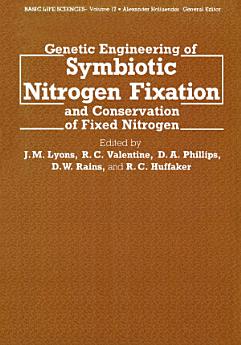Genetic Engineering of Symbiotic Nitrogen Fixation and Conservation of Fixed Nitrogen
J. M. Lyons
ธ.ค. 2012 · Basic Life Sciences หนังสือเล่มที่ 17 · Springer Science & Business Media
eBook
698
หน้า
reportคะแนนและรีวิวไม่ได้รับการตรวจสอบยืนยัน ดูข้อมูลเพิ่มเติม
เกี่ยวกับ eBook เล่มนี้
The present volume developed from a symposium entitled "Enhancing Biological Production of Ammonia From Atmospheric Nitrogen and Soil Nitrate" that was held at Lake Tahoe, California in June, 1980. The meeting was supported by the National Science Foundation, Division of Engineering and Applied Sciences and by the College of Agricultural and Environmental Sciences, University of California, Davis. A total of 99 scientists from 41 insti tutions participated. Plants capture solar energy in photosynthesis and use mineral nutrients to produce human food and fiber products. The extent to which such materials are removed from agricultural production sites represents a permanent drain of mineral nutrients. Some plants of agronomic importance such as alfalfa, soybean, and clover associate with soil bacteria and use photosynthetic energy to reduce N2 to NH3. Many other free-living bacteria and some symbioses involving procaryotes and eucaryotes also reduce N2. Such processes repre sent one natural mechanism by which Man can augment soil N for agronomic purposes without using fossil fuel to synthesize and distribute N fertilizer. Other metabolic conversions in the N cycle and physical leaching processes remove N made available through N2 fixation. Thus nitrification, denitrification, and utilization of soil N by plants are processes that must be con sidered if one is to conserve N captured by N2 fixation. The meeting at Lake Tahoe united scientists from many disci plines to review the literature and to discuss current research directed toward the goal stated in the symposium title.
ให้คะแนน eBook นี้
แสดงความเห็นของคุณให้เรารับรู้
ข้อมูลในการอ่าน
สมาร์ทโฟนและแท็บเล็ต
ติดตั้งแอป Google Play Books สำหรับ Android และ iPad/iPhone แอปจะซิงค์โดยอัตโนมัติกับบัญชีของคุณ และช่วยให้คุณอ่านแบบออนไลน์หรือออฟไลน์ได้ทุกที่
แล็ปท็อปและคอมพิวเตอร์
คุณฟังหนังสือเสียงที่ซื้อจาก Google Play โดยใช้เว็บเบราว์เซอร์ในคอมพิวเตอร์ได้
eReader และอุปกรณ์อื่นๆ
หากต้องการอ่านบนอุปกรณ์ e-ink เช่น Kobo eReader คุณจะต้องดาวน์โหลดและโอนไฟล์ไปยังอุปกรณ์ของคุณ โปรดทำตามวิธีการอย่างละเอียดในศูนย์ช่วยเหลือเพื่อโอนไฟล์ไปยัง eReader ที่รองรับ







